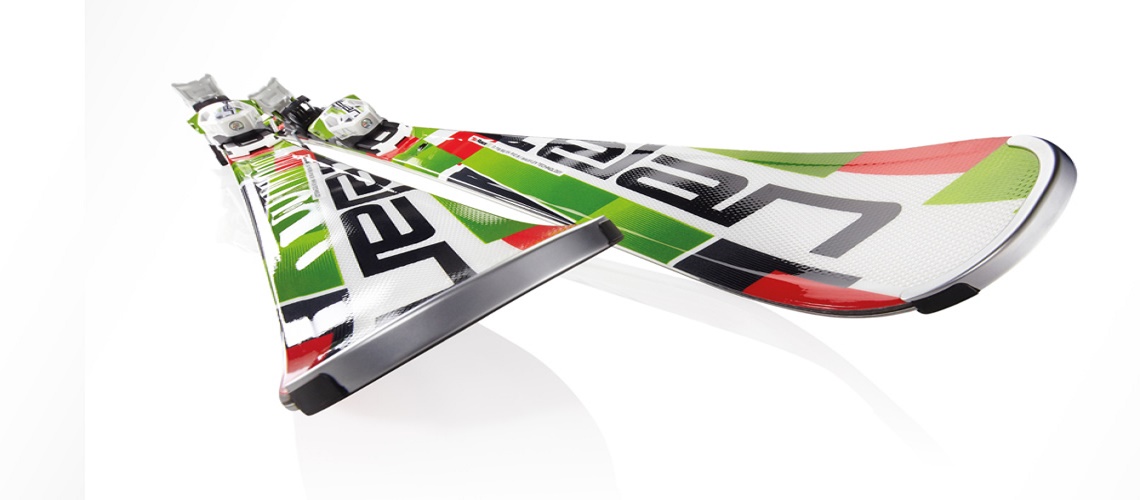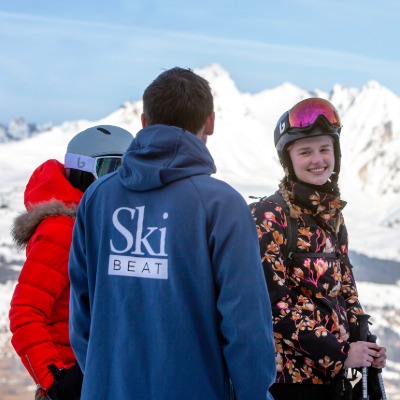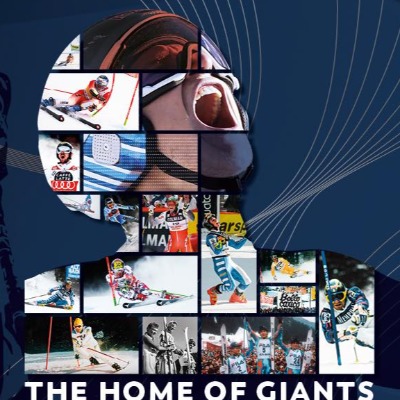Female Principle - Elan’s W Studio Celebrating Its Fifteenth Birthday

Elan was one of the first sports equipment manufacturers to begin manufacturing products adapted to the female anatomy, physical strength and of course style and taste. In the W Studio Elan brought together a team of dynamic and athletic women to work on designing women’s skis and accessories. Former ski racer Melanja Šober is tasked with strategic product planning under the Elan brand name. Her work includes overseeing development of different product categories, coordinating within the sector and constantly searching for the balance between development and manufacturing possibilities and demands of the market in order to create products that bring “Always Good Times” to all skiers. She is a founding member of the studio and has been leading its operations for many years. Her team of colleagues comes from different geographic and working backgrounds, but they all share a profound love of skiing. Year after year they bring innovative, technically brilliant and visually attractive products that bring joy to women skiers and help make sure they have good times in the company of snow, sun, mountain air and good friends. The design team has made skiing easier and better for many skiers.
This year Elan’s W Studio is celebrating its fifteenth birthday. At its inception back in 2003 there were not many sports products geared specifically towards women. How did you come to the idea of developing products specifically for the ladies?
Elan begun focusing on different user groups a long time ago. As we analyzed the use of skis and users themselves certain user groups begun to emerge and we set about developing skis for their specific needs. One of these groups were women, clearly. So we started gathering knowledge and information on how to continue innovating for them. The learning and data collection phase took quite a bit of time but now we know what women skiers want and we know how to focus our innovation process to cater to their wishes and goals.
How important is the fact that the team is made up exclusively of women?
All product groups are developed based on the user. We analyze user experiences with as many points of contact with our brand as possible in order to find what needs to be kept, improved or perhaps thrown out. W Studio is an extension of our research and development phase in which we first analyze the user and then set about generating ideas that the product manager can use to determine the guidelines for new projects. The team comes in early in the design and validation phase and also in the final testing phase. All the ladies use our products daily and provide additional feedback and intelligence for further development.
The W Studio team includes creative women of different backgrounds, ages and nationalities. Do you find this diversity to be an important factor in the search for innovative solutions, both in terms of graphic design and purely technological and functional solutions?
Of course! Users vary greatly and our team is to a certain extent representative of our key user profiles. It is impossible to cover each and every potential user profile, but direct contact with people who live and breathe skiing every day is immensely important.
The ski industry is dominated by men, so with many brands the first woman to use the product is the end consumer. At Elan we are aware of the importance of including women in all phases of development of women’s skis, from concept design to placement on shop shelves.
Last year your team had a significant rejuvenation. What were the reasons behind the changes?
We work with a group of experienced skiers who have been with us for a long time, but we wanted to increase diversity to reach even more user types.


With the fifteenth anniversary of W Studio you invited an interesting group of women to collaborate with you – fashion designer Nina Šušnjara, tennis player Polona Hercog and Canadian skiers Kelsey Serwa and Brittany Phelan who won gold and silver at the Pyeongchang. What do you expect from this collaboration?
All four girls are exceptional creators and achievers and their positive energy is absolutely invigorating. On the other side there is the Elan brand, growing stronger and more recognizable globally, which brings increased user expectations.
By inviting fashion designer Nina Šušnjara, tennis player Polona Hercog and Canadian skiers Kelsey Serwa and Brittany Phelan to participate in designing a limited edition of our skis, we gained an insight into these unique and strong personalities. Together we created a unique limited edition ski line that will be available this winter.
Each of the four collaborators put their hand to designing their own signature ski and went through all the phases of product development at Elan. A great many steps and factors come together in the development phase and the entire story of creation will be presented together with the special skis.
Did men have any input in the project, especially the technical aspects?
Elan is not made up only of women and it is clear that men work in all areas as well – in manufacturing, development, sales ... We are all part of the same process. Elan W Studio does not mean that it is exclusively women that bring the skis to life. Women are the ones that propose ideas and new projects that inform the research and development phase and then follow these projects through the entire process. It would be senseless to emphasize that only women make the skis.
What is the process of making a ski and how long does it take?
If we set aside the long term strategic product planning products usually find their way to the end consumer after a good two years of development. Once the project of a new ski line is confirmed, we carefully study the intention of the product. Based on that information we then draft guidelines for the development department and collaborate closely with them. Our development department is the source of our best and greatest innovations. They create prototypes and find different solutions to the problem we are working on. A test team then goes to work with a target user of a certain product and thoroughly tests proposed solutions. Their feedback is then used to decide on whether to take the product to the next phase or return to prototyping. The 3D shape of a product has become very important since product lifecycles go up to 5 years or more, so we build many full size product models in this phase. When the shaping is confirmed, we begin working on product graphics.
The marketing story of the product is developed in parallel with the product itself because it is very important that users not only find the product attractive but also clearly perceive and understand it. Checks are put in place throughout the process to ensure that we stay on the right track and we also include the end user in every step. As for the graphic design of Elan products, it always supports technology because it is the technical innovation that makes our products unique and we want to show this to the users.
How do men’s and women’s attitudes to skiing differ in your opinion?
Women link skiing to an entire spectrum of experiences on snow, in the sun and fresh air, much more so than men. For women spending time with family and friends is what it’s all about. That is why we want to create products that help create good moments, memories and good times, but not necessarily at the expense of performance and sporting development.
Which factors do female skiers emphasize when selecting skis?
Skis must allow women to move through winter terrain with less effort, both on and off piste. Low weight is also an important factor, but it must not hinder the performance and capability of the skis. It is also important that we offer a full range of skis to cover different types of skiing and snow. For example, freeriders and ski tourers want lightweight and high performance skis.
But there are also very proficient skiers among women who want full on performance and response from their gear. Do you think about them as well?
Of course! Elan’s ski lines for both men and women include top level skis. The Speed Magic racing skis are based on one of the most popular on-piste skis, the SLX. Insomnia and Interra are built on the same base as the Amphibio 16 and 14. In the freeride segment the women’s models bring exactly the same performance as the men’s - or rather universal - models.
How would you describe the essence of women’s skis?
Functionality is key. Clearly that needs to adapt to the type of user. Regardless of whether we are talking about the lightest ski in the world (Delight) or a racing ski, it has to fulfil certain expectations of performance for skiers to feel safe and confident on snow and allow them to progress and expand their knowledge. And, of course, to have “Good Times”.
These products are about much more than shape and product graphics, they are first and foremost about adapting to the female anatomy. How are women’s skis different from the men’s?
Women’s skis need to be responsive and light and in line with the female anatomy that is different from the men’s. We spend a lot of time carefully and thoroughly studying female movement patterns and transfers of force through turns. On average women prefer shorter skis. Our task is then to make skis that provide the same degree of stability than longer skis. Women also have a slightly different center of gravity during skiing. The skis are adapted to different positioning. In the freeride segment we developed a great product based on the women’s Tubelight core models. It is a unique solution that uses carbon and titanium inserts to increase power and decrease weight. The resulting ski is not only lighter but also more responsive and stable. It is interesting to note that our Ripskick skis contain no metal parts in the core but still perform extremely well on all types of snow.
On the graphic design side you have been working with Studio Sonda for some time now. What is the nature of your cooperation?
Studio Sonda is an excellent agency and our long term partner. They are our extended arm on the graphic design side and make sure that we keep focused on current trends. They also produce exceptional graphic concepts that we then implement on our products.
Where do you turn to for inspiration for your ski design?
It is a combination of different areas, ranging from trends that we actively monitor and refresh, to leveraging the knowledge that our partners bring to the table. We participate in conferences, keep our eyes on neighboring industries...
Sometimes we take our product team to a major city and watch what people wear, how they act, which products they use...
Which designer is the greatest inspiration for you personally?
That would have to be Slovenian automotive designer Robert Lešnik who works with Mercedes Benz. What I find most inspiring with his approach is how he manages to remain faithful to the fundamental design guidelines of the brand while adding his own distinctive personal note. He truly is an amazingly talented designer and highly praised in the automotive industry.
How difficult is it to create new product graphics each year and offer something fresh and not seen before?
It certainly is a major challenge. But I feel we have been successful in facing up to it, aided in no small part by the design research that we work on systematically throughout the year. In terms of technical aspects low weight is very important in women’s skis. The superlight Delight ski started a small revolution.
It is our fundamental opinion that skiing is not just for racers. Most skiers are regular people - men, women, children, good skiers, learners, ski tourers...
Accordingly, our innovations are not aimed just at the top end of the ski spectrum. We are the only company in the world to develop true innovations that make skiing easier for kids. It has absolutely nothing to do with racing but it is completely in line with our philosophy of making skiing easier and better for each and every skier.
The lightest women’s ski in the world was developed with the aim of bringing skiing closer to women and solving the problems that women skiers face. Lighter skis mean less effort which in turn means more skiing. Not to mention that lighter skis are lighter to carry. The Delight opened up a section of the market that nobody catered for before. Our sales results show that we responded well to the needs of the users.
Every innovation we put into our skis stems from the user and our mission to bring skiing closer to skiers and show them that it can be safe, fun and available to everybody.
What challenges will you be facing in the future?
Our products have collected many design awards and first places in ski tests for years now. Innovative skis are the result of our rich tradition and dedication, not only to making skis but creating cutting edge ski equipment that brings users closer to unforgettable experiences in the mountains.
As a global brand we believe that every one of us can become a good skier and have a wonderful skiing experience. That is why we develop skis for all skill levels regardless of gender, age or dedication to skiing. Skiing is a magical combination of snow, sun and mountains and we want our users to have their best day on the snow with our innovative products.
Our new motto “Always Good Times” addresses skiing as an activity that brings us good times in the company of friends and family.














